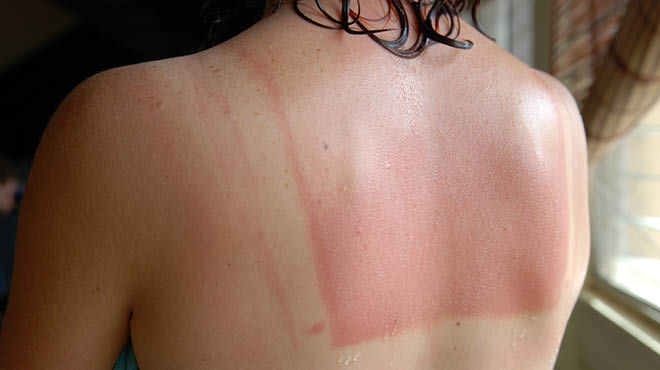Recent Posts
5 simple steps to help prevent skin cancer

In parts of the country where winter seems to drag on forever, spring and summer are exciting seasons. The air becomes warmer, the sun gets brighter and outdoor activities are frequent. Naturally, your skin's exposure to the sun increases during this time of year, which results in a greater risk of skin damage, including development of skin cancer. The good news? Most skin cancers are preventable.
What is skin cancer?
Specifically, skin cancer is the abnormal growth of skin cells, and usually the result of overexposure to the sun and harmful ultraviolet (UV) rays. Although skin that's most exposed accounts for the majority of cases, well-covered areas of the body, like your palms or genital area, also can be affected. All pigmentations — dark and light — are subject to skin cancer.
According to the American Cancer Society, skin cancer is the most common cancer in America, with 5.4 million basal and squamous cell skin cancers and more than 76,000 melanoma cases diagnosed each year. Melanoma, the deadliest form of skin cancer, kills more than 10,000 Americans each year — nearly 75% of all skin cancer deaths in the U.S.
What common forms does skin cancer take?
Skin cancer can take many forms, but the three most common are:
- Basal cell carcinoma
Beginning in the basal cells in the outer layer of skin, basal cell carcinomas may appear as a pearly or waxy bump, as well as a flat, flesh-colored or brown scar-like lesion. - Squamous cell carcinoma
Also in the outer layer of skin, this type of skin cancer forms in squamous cells. Signs often are a firm, red nodule or a flat lesion with a scaly, crusty surface. - Melanoma
Melanoma makes up a small fraction of skin cancers, but it's also the most deadly. Symptoms of melanoma include:- A large brown spot with darker speckles
- A mole that changes in color, size or feel, or that bleeds
- A small lesion with an abnormal border, and sections that appear red, white, blue or bluish-black
- Dark lesions on your palms, soles, fingertips or toes, or on mucous membranes lining your nose, mouth, vagina or anus
What can I do to prevent skin cancer?
Leading medical experts, including Mayo Clinic, recommend these five steps for preventing skin cancer:
- Avoid the sun between 10 a.m. and 4 p.m., which are the peak hours of sun strength in North America, even in the winter and on cloudy days.
- Wear sunscreen — at least sun protection factor (SPF) 30 — throughout the entire year. Reapply sunscreen every two hours or more frequently if you're swimming or sweating.
- Wear sun-protective clothing with ultraviolet protection factor (UPF) of 50+, which blocks 98% of the sun's rays. Hats with wide brims and sun-protective clothing that covers your arms and legs are helpful to protect your skin from harmful UV damage. Sunscreen doesn't block all UV rays, which cause skin cancer.
- Avoid tanning beds. Tanning beds operate with UV lights, damaging your skin and potentially leading to cancer.
- Self-check your skin. If you notice differences, talk with your health care team.
Who's most at risk for skin cancer?
Anyone can get skin cancer, but those at a higher risk include:
- Experiencing heavy exposure to UV rays
- Having lighter skin
- Having a family history of skin cancer
- Having prevalent moles
- Experiencing numerous severe sunburns in the past
- Having a weakened immune system
- Living in sunny or high-altitude climates
Any change in your natural skin color, such as a tan, burn or freckle, is dangerous for your skin and increases your risk of skin cancer. Contact your health care team if you have concerns about skin abnormalities. Skin cancer is treatable when caught in its early stages.
Have fun as the warm days roll in, but always keep skin cancer prevention in mind.
Elizabeth Demaree, D.O., specializes in dermatology and cosmetic services in Eau Claire, Wisconsin.





